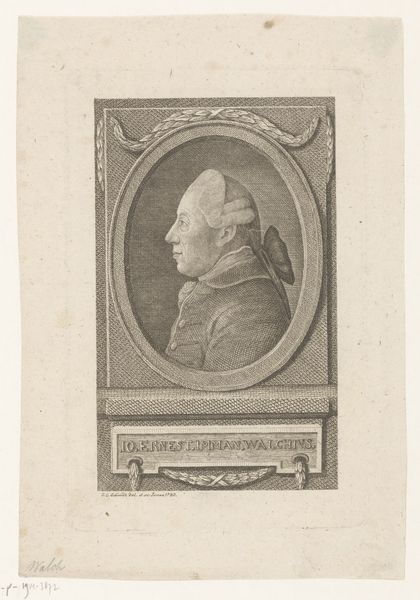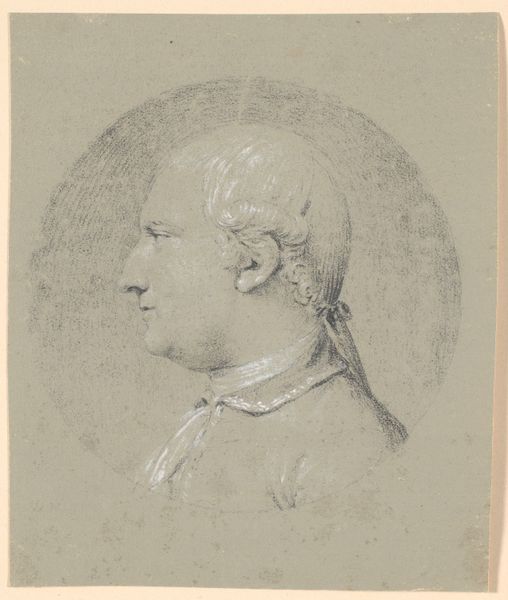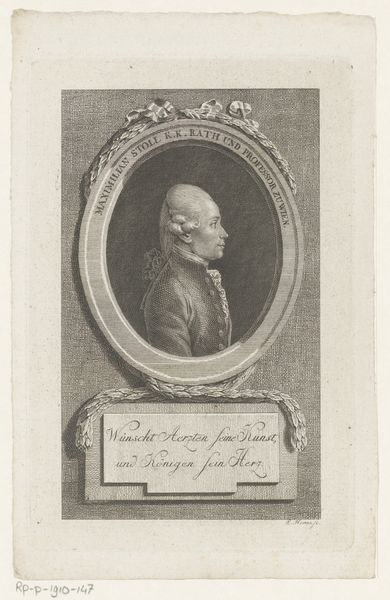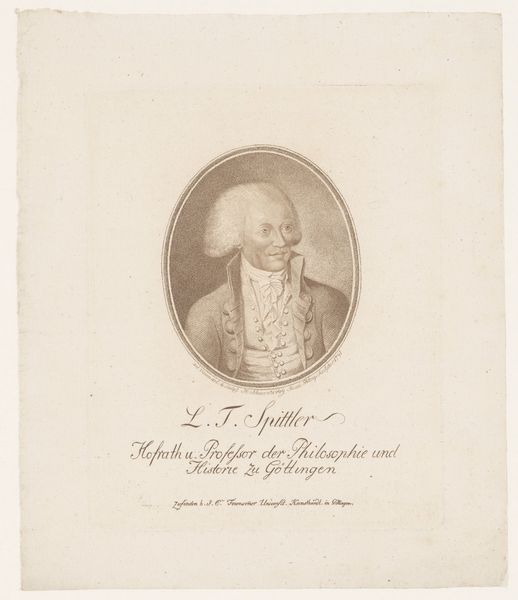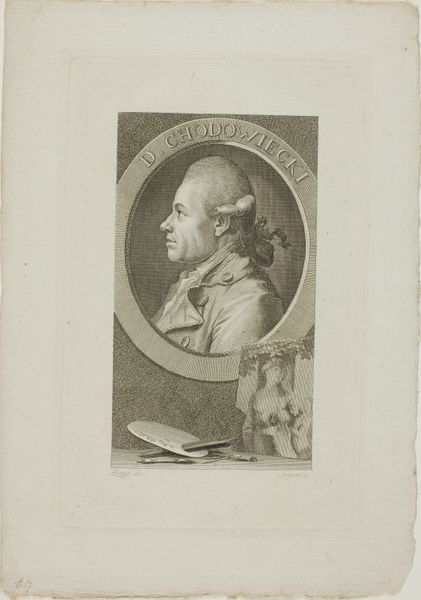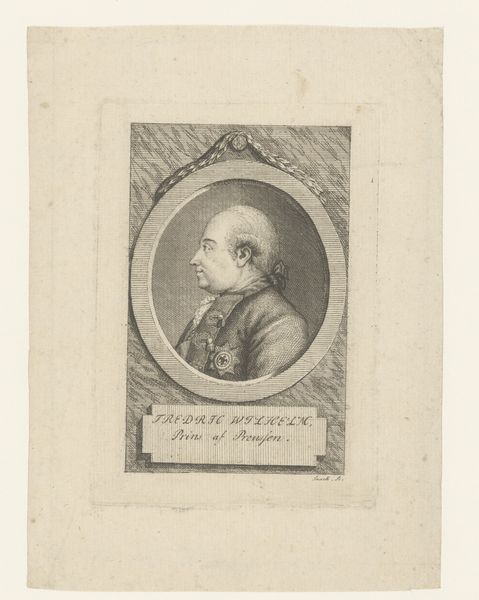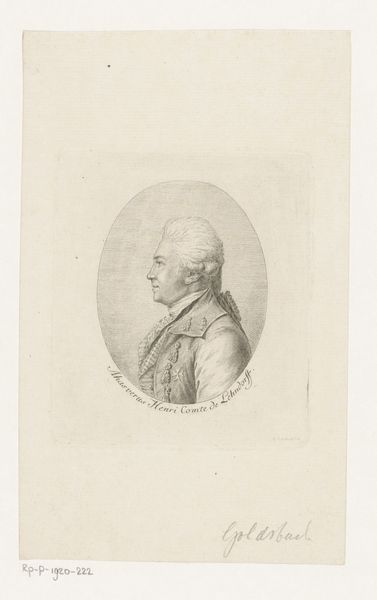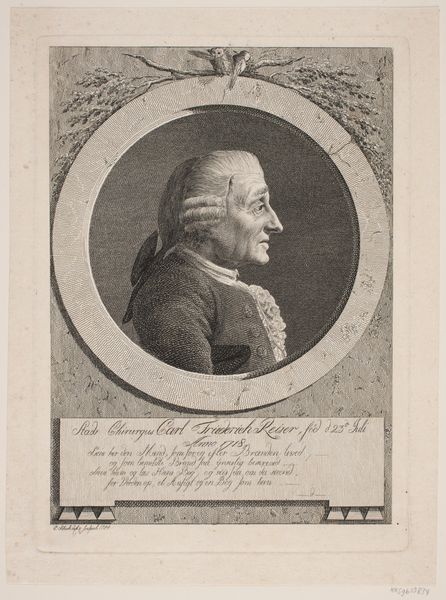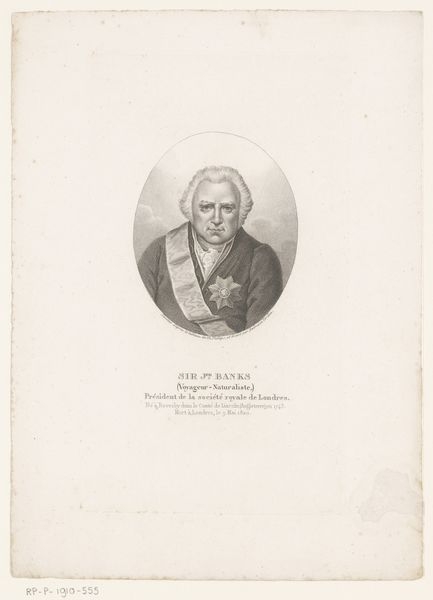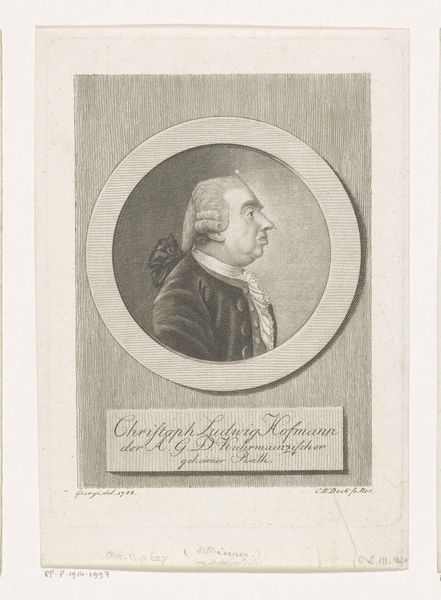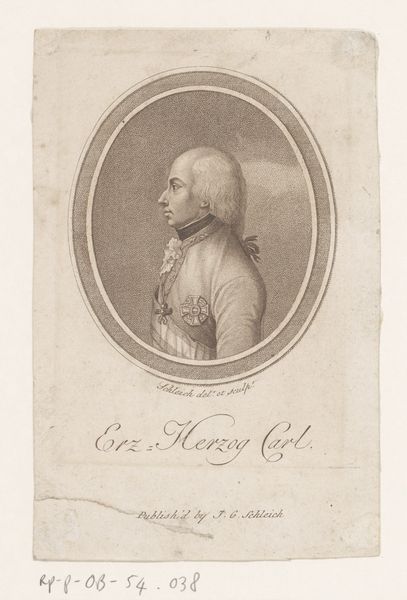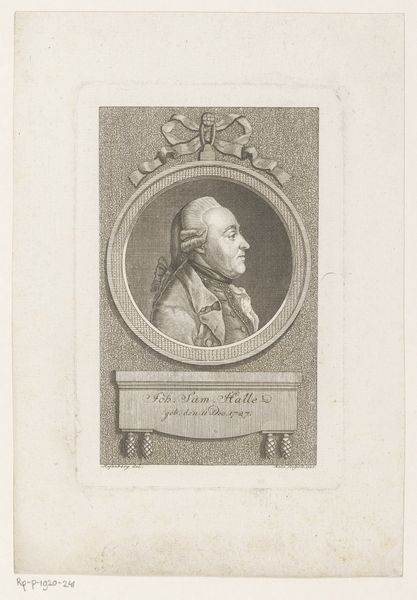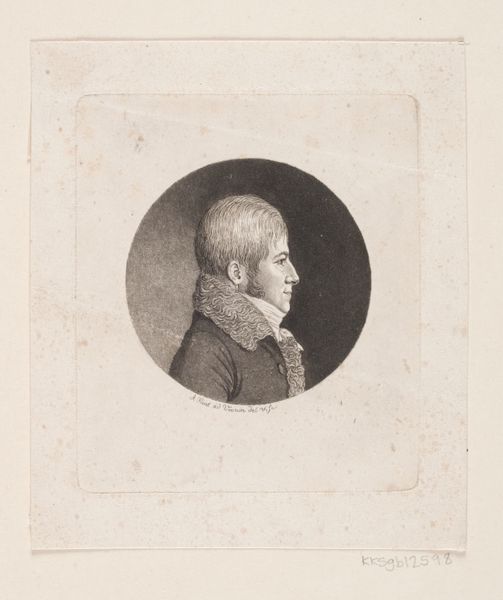
print, engraving
#
portrait
#
neoclacissism
# print
#
engraving
#
realism
Dimensions: height 106 mm, width 71 mm
Copyright: Rijks Museum: Open Domain
Curator: The etching before us, "Portret van een onbekende man," crafted by Leonhard Heinrich Hessell around 1789, intrigues with its intimate yet distant presence. The portrait resides here at the Rijksmuseum and presents a man whose identity is now lost to us. Editor: The immediate feeling I get is one of formality and perhaps a slight melancholy. The sepia tones and the subject’s severe profile add to this sense of detached observation. It’s a window into a world that feels simultaneously familiar and inaccessible. Curator: Absolutely, the visual language points to neoclassicism and burgeoning realism. The etched line creates a remarkable likeness while presenting an almost Roman gravitas, something so carefully designed for effect and status. Consider the circle that holds him—a symbol of wholeness, completion, perfection, but also, here, confinement. Editor: Confinement indeed. This portrait, while attempting to immortalize an individual, also locks him into the societal expectations of his time. His wig, his dress—each element speaks to the restraints of class and gender expression in the 18th century. I wonder, what freedoms, what possibilities, were denied to this man because of his station? Curator: The engraver really captured those complex signifiers of power, using light and shadow to articulate those elements you highlight so deftly. The symbolic load feels heavy. Note how the engraving also imitates the strokes of a charcoal or chalk drawing, creating an image which is both immediate and yet somewhat distanced, too. It evokes a sense of history while retaining that spark of humanity. Editor: It’s precisely this tension that I find compelling. The artist aimed for permanence and prestige, but, today, what endures is our speculation about the sitter’s internal life, and the way it speaks to ongoing debates about power, class, and representation in portraiture. Curator: Well, to walk away pondering those questions is exactly the gift that historical portraiture gives us, doesn’t it? Editor: Precisely. This seemingly straightforward portrait offers so much richness, both to investigate and interrogate.
Comments
No comments
Be the first to comment and join the conversation on the ultimate creative platform.
